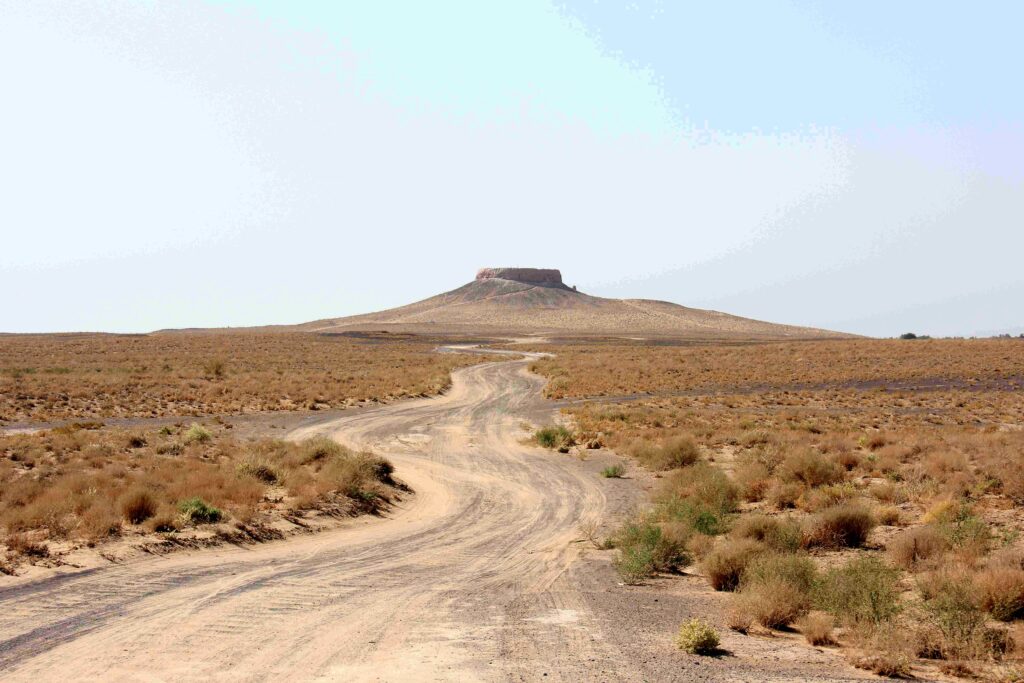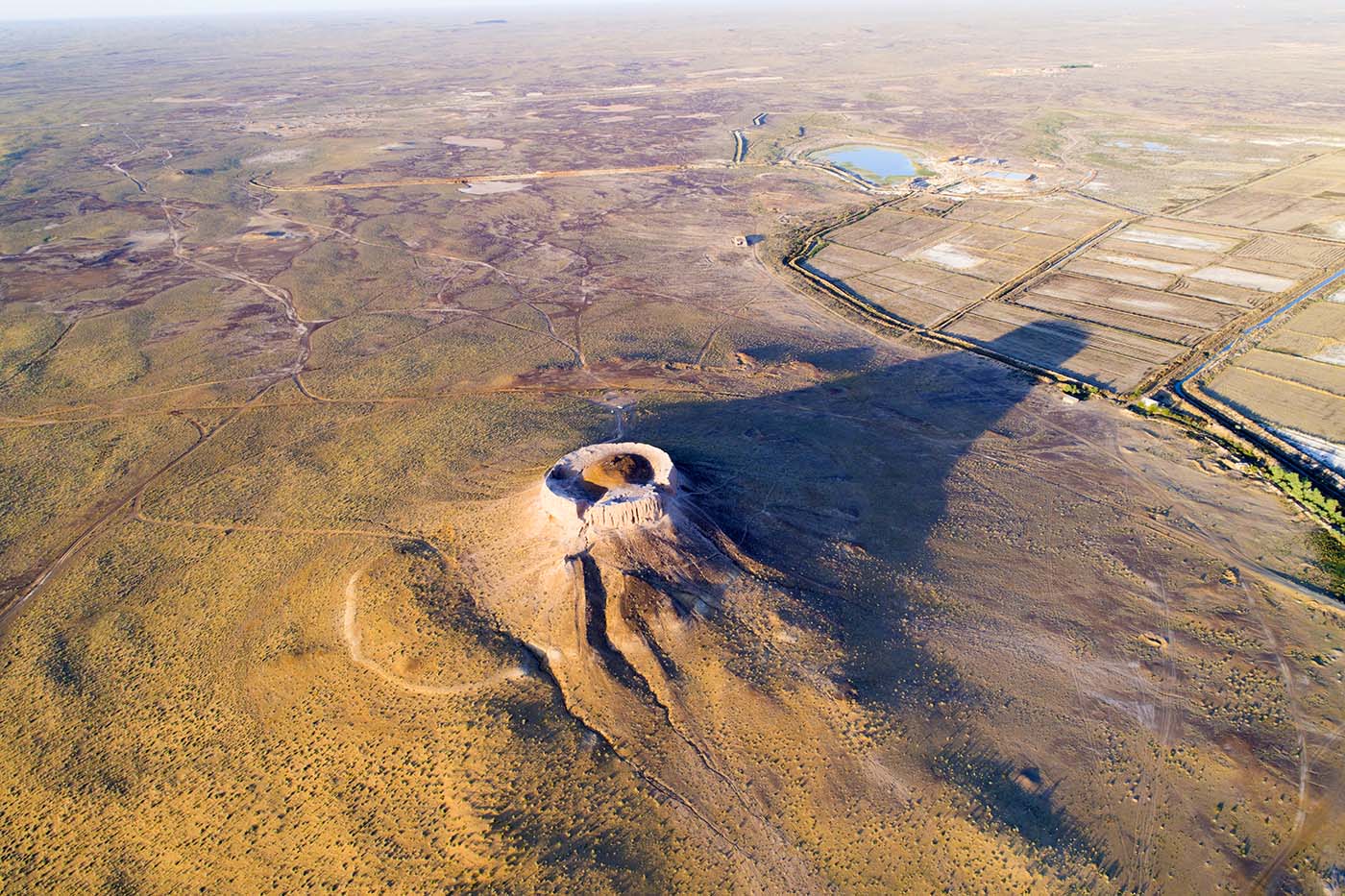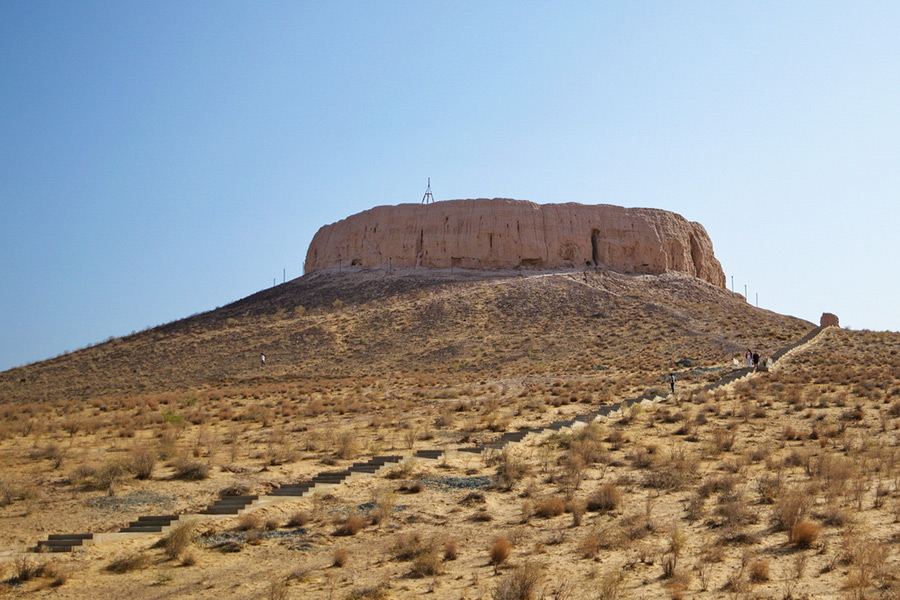遗产数据库
Chilpyk
摘要: 奇尔皮克卡拉卡尔帕克斯坦的奇尔皮克塔奇尔皮克(Chilpyk),又称希利皮克(Shylpyk)或奇尔帕克卡拉(Chilpak Kala),是位于卡拉卡尔帕克斯坦的一座引人注目的古代琐罗亚斯德教纪念碑。其历史已超过2200年。这座圆形无顶塔距离努库斯43公里,高15米,直径65米,坐落于一座自然形成的圆形山顶上。奇尔皮克(Chilpyk)被琐罗亚斯德教徒用于独特的天葬仪式 ...
奇尔皮克
卡拉卡尔帕克斯坦的奇尔皮克塔
奇尔皮克(Chilpyk),又称希利皮克(Shylpyk)或奇尔帕克卡拉(Chilpak Kala),是位于卡拉卡尔帕克斯坦的一座引人注目的古代琐罗亚斯德教纪念碑。其历史已超过2200年。这座圆形无顶塔距离努库斯43公里,高15米,直径65米,坐落于一座自然形成的圆形山顶上。
奇尔皮克(Chilpyk)被琐罗亚斯德教徒用于独特的天葬仪式。琐罗亚斯德教徒认为腐烂的尸体是对大地的玷污,因此将死者置于塔中,任由猛禽啄食。当肉从骨头上剥离后,遗骨会被收集在陶制容器(即骨灰瓮)中,然后埋葬。这种葬法深深植根于琐罗亚斯德教的哲学思想,体现了对自然元素的深刻尊重。
最初,该塔设有一段20米长的阶梯,阶梯直接开凿于山体之中,便于从塔底登至塔顶。塔内设有一条通道通往附近的河流,为各种仪式提供了便利。对塔周围及内部的考古发掘,发现了众多陶土和石质的骨灰瓮,其中许多现陈列于努库斯和塔什干的博物馆中。
奇尔皮克的历史经历了数次重大变革。7世纪阿拉伯军队到来时,该塔经历了首次大规模重建。在9世纪和10世纪古代花剌子模帝国鼎盛时期,它又再次进行了修缮。一些学者认为,在这些时期,奇尔皮克被改建为信号塔和防御塔,并被纳入花剌子模沙国的防御体系。
奇尔皮克是卡拉卡尔帕克斯坦文化遗产的象征。它甚至被描绘在共和国的国徽上,凸显了其文化重要性。参观奇尔皮克最好选择清晨,赶在一天的高温到来之前。登上塔顶,可以俯瞰周围壮丽的全景。从高处望去,可以看到阿姆河在阳光下波光粼粼,两侧是郁郁葱葱的绿色田野和花园。在这片肥沃的景色旁边,是干旱的荒地,点缀着一片片绿色和红色的灌木丛以及盐沼,形成了鲜明的对比。
在奇尔皮克(Chilpyk)的最高点,矗立着一座覆盖着织物丝带的三角架结构。这些由当地人系上的丝带被认为能带来好运和幸福,为这座古老遗址增添了一抹当地传统色彩。
奇尔皮克(Chilpyk)生动地提醒着我们该地区琐罗亚斯德教的过去及其对当地习俗和信仰的持久影响。作为卡拉卡尔帕克斯坦最著名的地标之一,它继续吸引着游客和学者,他们渴望探索其历史和文化意义。
Chilpyk
Chilpyk tower, Karakalpakstan
Chilpyk, also known as Shylpyk or Chilpak Kala, is a remarkable ancient Zoroastrian monument located in Karakalpakstan. Its age exceeds 2200 years. Situated 43 kilometers from Nukus, this round, roofless tower rises 15 meters high and spans 65 meters in diameter, perched atop a naturally rounded hill.
Chilpyk was used by Zoroastrians for the unique practice of sky burials. In line with Zoroastrian beliefs that prohibited the defilement of the earth with decaying bodies, the deceased were placed in the tower to be consumed by birds of prey. Once the flesh was stripped from the bones, the skeletal remains were collected in earthenware vessels, known as ossuaries, and then buried. This method of burial was deeply rooted in Zoroastrian philosophy, reflecting a profound respect for the elements of nature.
Originally, the tower featured a 20-meter staircase with steps carved directly into the hill, allowing access from the base of the structure to the top. A passageway from the tower led to the nearby river, facilitating various ritual practices. Archaeological excavations around and inside the tower have uncovered numerous clay and stone ossuaries, many of which are now displayed in museums in Nukus and Tashkent.
The history of Chilpyk is marked by several significant transformations. With the arrival of Arab forces in the 7th century, the tower underwent its first major reconstruction. It was again modified during the peak of ancient Khorezm in the 9th and 10th centuries. Some scholars suggest that Chilpyk was repurposed during these times as a signal and defense tower, integrated into the fortification system of the Khorezm Shakh State.
Chilpyk is a symbol of Karakalpakstan’s heritage. It is even depicted on the coat of arms of the Republic, highlighting its cultural importance. Visiting Chilpyk is best done early in the morning before the intense heat of the day sets in. The tower offers stunning panoramic views of the surrounding landscape. From its vantage point, one can see the Amu Darya river shimmering in the sunlight, flanked by lush green fields and gardens. Adjacent to this fertile scenery are arid wastelands, dotted with patches of green and reddish shrubs and salt marshes, creating a striking contrast.
At the highest point of Chilpyk, a tripod structure covered in fabric ribbons stands. These ribbons, tied by locals, are believed to bring luck and happiness, adding a touch of local tradition to the ancient site.
Chilpyk remains a vivid reminder of the region’s Zoroastrian past and its enduring influence on local customs and beliefs. As one of the most prominent landmarks in Karakalpakstan, it continues to draw visitors and scholars alike, eager to explore its historical and cultural significance.




